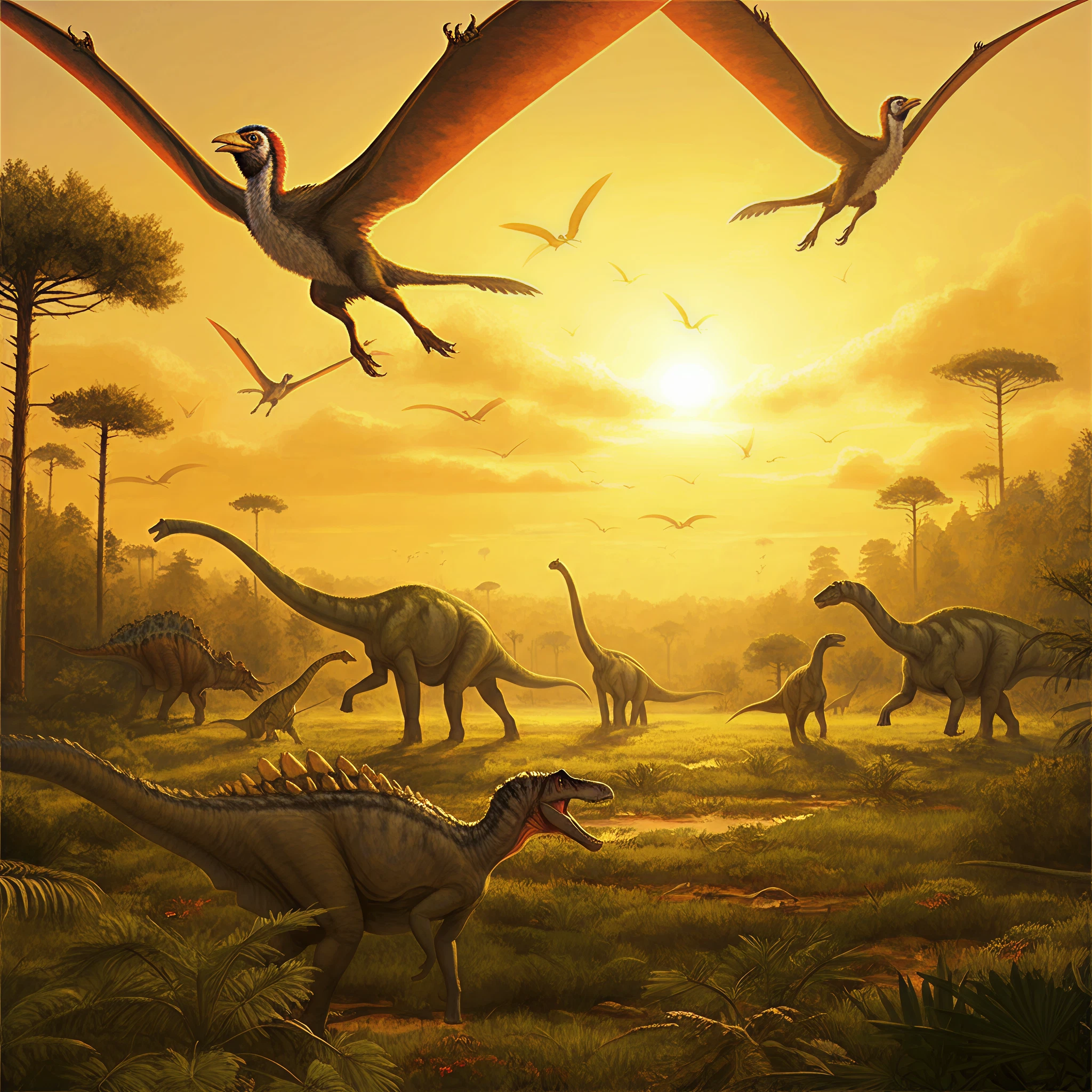Some of the largest animals to ever soar through the skies, the pterosaurs, weren’t just aerial marvels. Recent fossil discoveries reveal they frequently walked the Earth alongside dinosaurs, providing fascinating insights into their unique behavior and interactions with their environment. Among these creatures was Quetzalcoatlus, a flying giant with a wingspan of up to 32 feet, whose footprints offer a new glimpse into its terrestrial lifestyle.
Pterosaurs on the Ground
Pterosaurs, despite being evolutionary relatives of dinosaurs, were incredibly specialized in their functions. Unlike earlier beliefs that pitched them as purely airborne, footprints preserved in fossilized mudflats and coastlines tell a different story. Researchers from the University of Leicester have shed light on these tracks, revealing that pterosaurs, including Quetzalcoatlus, spent substantial time walking and wading.
An Insight Through Footprints
Footprints are more than just impressions; they are records of history. Through 3D modeling and analysis, paleontologists matched certain tracks with the skeletal structure of Quetzalcoatlus and other pterosaur groups. According to Robert Smyth, a doctoral researcher at the University of Leicester, “Tracks reveal where these creatures lived, how they moved, and offer unique clues about their behaviors.” These ancient impressions are now revolutionizing our understanding of these prehistoric giants.
Specialized Groups, Unique Adaptations
Different pterosaur groups left distinctive tracks, reflecting their specialized terrestrial habits:
1. Quetzalcoatlus
The star of recent research, Quetzalcoatlus’ tracks were found globally in coastal and inland areas. With long legs built for terrestrial mobility, these tracks confirm it thrived both in the skies and on the ground, dominating multiple ecosystems.
2. Ctenochasmatoids
Known for their needle-like teeth and long jaws, ctenochasmatoid pterosaurs left their footprints in coastal locales. These impressions suggest they waded through shallow waters to catch small fish and floating prey, taking advantage of their specialized feeding structures.
3. Dsungaripterids
Tracks from dsungaripterid pterosaurs hint at unique terrestrial behaviors. Equipped with toothless, curved beaks for prying open tough prey and large back teeth for crushing shells, these creatures roamed environments rich in shellfish and hard food sources.
The Value of Tracks in Pterosaur Research
Skeletal fossils are invaluable, but footprints provide something unique – a snapshot of living movement and behavior. For creatures like pterosaurs, where flying skeletons rarely offer clues about ground activity, these tracks fill in critical gaps. Researchers can now model posture, gait, and even speculate the environments they frequented.
“Tracks are often overlooked in pterosaur studies,” says Smyth, “but they uncover details about their biology and environments that bones simply cannot capture.”
What This Discovery Means for Paleontology
This groundbreaking research redefines how we view flying giants like Quetzalcoatlus. It highlights their ability to adapt both aerially and terrestrially, showing how versatile these creatures were in their ecosystems from coastal mudflats to inland habitats. Additionally, the newfound appreciation for tracks emphasizes the importance of preserving fossilized footprints, which hold keys to understanding prehistoric life.
A Walk Among Giants
The idea that flying giants like Quetzalcoatlus walked among dinosaurs paints a vivid picture of prehistoric ecosystems. From powerful limb adaptations to specialized feeding behaviors, these creatures were more than just rulers of the skies. They were versatile inhabitants of a complex ancient world.
If this has sparked your interest in paleontology and the secrets of ancient life, keep an eye out for future discoveries unveiling yet more details about these fascinating creatures. Ancient tracks are rewriting history, one footprint at a time.








